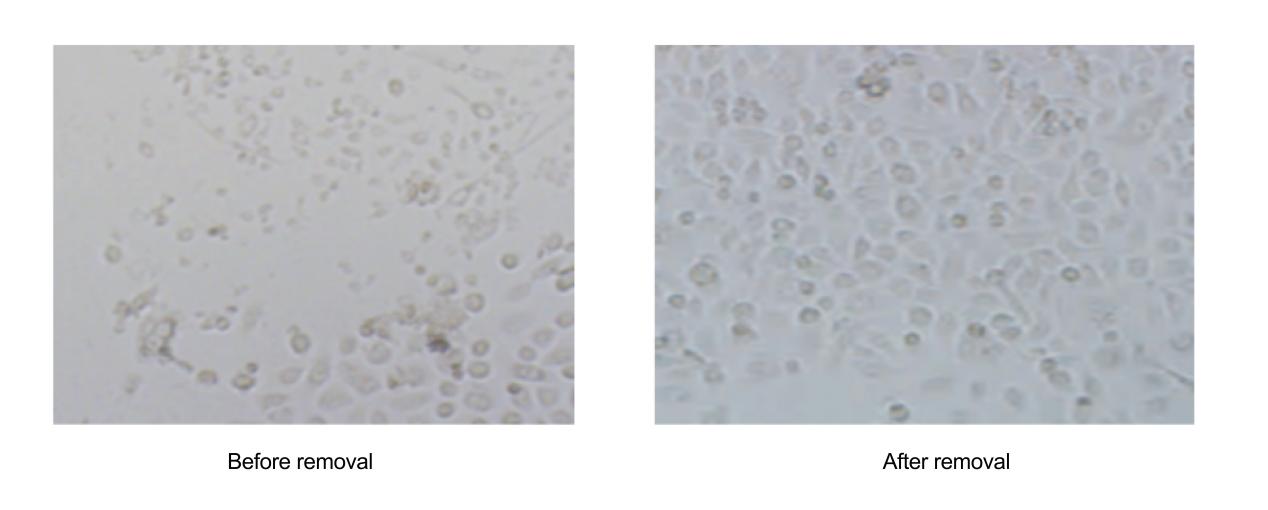A Comprehensive Solution for Mycoplasma Contamination

Mycoplasma contamination poses various detrimental effects on cell cultures, emerging as a significant issue during cell cultivation. Conservatively estimated, the contamination rate in routine cell cultures ranges from 15% to 35%, significantly compromising the credibility of experimental results. Hence, periodic mycoplasma detection and eradication are crucial to ensure the absence of mycoplasma in the cell culture system and obtain accurate and reliable experimental data. Arcegen, after numerous experimental validations, has introduced a comprehensive solution for mycoplasma clearance.
What is Mycoplasma?
Mycoplasma, the smallest and simplest prokaryotic organisms discovered to date, with a diameter ranging from 0.1 to 0.3 μm. They can easily pass through filters and contaminate the cultivation system, exhibiting high pleomorphism with various forms such as spherical, rod-shaped, filamentous, and branched.

Figure 1. Morphology and Characteristics of Mycoplasma
Consequences of Mycoplasma Contamination
Contamination caused by bacteria and fungi is relatively easy to detect, prevent, and remove. However, contamination caused by mycoplasma is difficult to detect; even when the growth density reaches 107-109 CFU/ml, there are often no visible signs of contamination (such as turbidity, pH changes, etc.).

Figure 2. Changes in Cellular States Associated with Mycoplasma Contamination
Typical Sources of Mycoplasma Contamination
1. Cross-contamination between cells.
2. Contamination of the work environment or laboratory equipment.
3. Poor aseptic techniques by experimenters.
4. Contamination of culture media or other reagents.
5. Contamination of the original tissues or organs used for cell preparation.
What to Do When Mycoplasma Contamination Occurs in Cell Culture

Figure 3. Comprehensive Solution for Mycoplasma Contamination
Solution for Mycoplasma Contamination in Cell Culture
1. Mycoplasma Detection
1)One-step Isothermal Mycoplasma Detection
Arcegen's one-step isothermal mycoplasma detection kit utilizes a unique isothermal amplification technology with stronger color discrimination, transitioning from blue-purple (negative) to sky-blue (positive), facilitating visual identification. It includes additional anti-contamination components to eliminate false-positive results.

Figure 4. Workflow of One-step Mycoplasma Detection Procedure
2)PCR-based Mycoplasma Detection
Arcegen's PCR-based Mycoplasma detection method differs from conventional one-step PCR detection methods by increasing the number of primer pairs from 1 to 3, targeting the conserved regions of Mycoplasma 16S and 23S rRNA. This nested PCR amplification enhances sensitivity while reducing non-specific amplification, allowing for detection of Mycoplasma at levels as low as a single copy.

Figure 5. Gel Electrophoresis Image of PCR Amplification with Mycoplasma Samples of Different Concentrations
Table1. Types of Mycoplasma Detectable by Arcegen One-Step Isothermal Mycoplasma Detection Kit

[Note]The blue portion indicates the same mycoplasma species detectable by both the one-step isothermal detection and PCR detection methods.
2. DfCell Mycoplasma Removal Reagent (1000×)
DfCell Mycoplasma Removal Reagent (1000×) is a mixed formulation that achieves effective mycoplasma clearance by inhibiting the synthesis of proteins necessary for DNA and mycoplasma growth, without causing harm to the cells. It aims to rescue your cells to the greatest extent possible and minimize the losses caused by mycoplasma contamination.

Figure 6. Demonstration of Cell Removal Effectiveness
- Characteristics of DfCell Cell Removal Reagent:
Low toxicity: Minimal toxicity to cells, does not affect subsequent cell experiments such as cell viability assays and cell transfection.
Strong stability: The reagent can be stored at -20°C for an extended period while maintaining high efficacy.
Simple operation: Simply add the product to the culture medium contaminated with mycoplasma and incubate.
Fast acting: "Immediate effect," visible results in as little as 3 days.
Broad removal range: Capable of removing the majority of mycoplasma types commonly found in laboratories.

Figure 7. Illustration of Cell Toxicity Detection of DfCell Mycoplasma Removal Reagent
3.Prevention of Mycoplasma Infection

FAQ
Q: How can I detect if fresh culture medium is contaminated with Mycoplasma?
A: Incubate the fresh culture medium in a CO2 incubator for 48 hours (sample), then collect a certain amount of supernatant for testing. If the sample turns sky blue or shows PCR amplification bands, it indicates Mycoplasma contamination.
Q: Why does the result show positive in the one-step constant temperature assay kit but negative in PCR testing for the same sample?
A: The one-step constant temperature assay kit detects 27 types of Mycoplasma, while PCR testing only detects 12 common types. The Mycoplasma contamination in the sample may not be included in the types detected by PCR.
Q: Why does the PCR result show positive while the one-step constant temperature assay kit result is negative for the same sample?
A: The sensitivity of PCR is higher than that of the one-step constant temperature assay, as it can detect single copies of Mycoplasma, while the one-step assay requires 103 copies.
Q: Which is better, nested PCR or the one-step constant temperature assay kit?
A: Customers can choose the appropriate product based on their experimental needs, or they can use both methods together to identify Mycoplasma contamination.
Related Products
|
Product Name |
Catalog Number |
Specifications |
|
C230106E |
25 T |
|
|
C230106S |
100 T |
|
|
C230105S |
25 T |
|
|
C230105M |
100 T |
|
|
C230101E |
500 mL |
|
|
C230101S |
2×500 mL |
|
|
C230101M |
10×500 mL |
|
|
C230102E |
100 uL |
|
|
C230102S |
1 mL |
|
|
C230102M |
5×1 mL |
